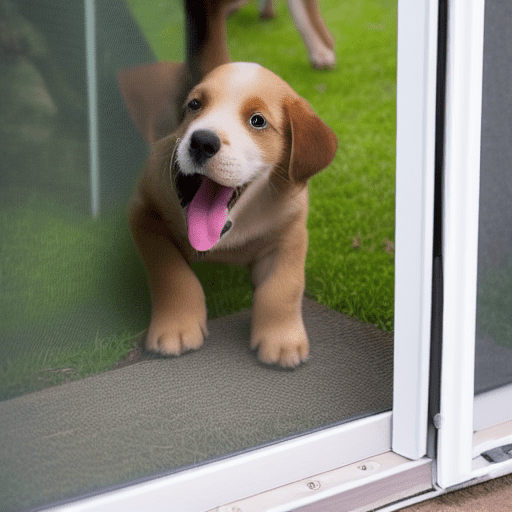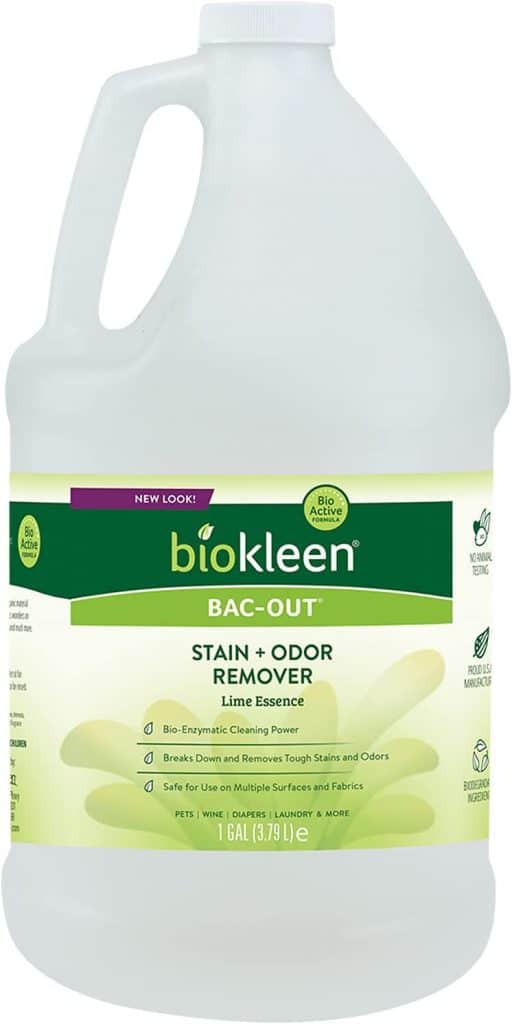House training a puppy in 5 days may seem impossible, but anyone can do it with the right approach. This article will outline a five-day plan to help your puppy learn where to go to the bathroom and how to behave inside the home. So if you’re ready to start, let’s get to work!
Introducing House Training a Puppy in 5 Days
House training a puppy takes patience, consistency, and lots of supervision. But it can be done in just five days with the right approach.
You will spend the first two days getting the puppy used to its new home and surroundings. This includes showing them where their food, water, and bed are.
On days three and four, you’ll start teaching your puppy basic commands like “sit” and “stay.” And on day five, you’ll begin house training. You’ll need to confine your puppy to a small area, such as a kitchen or bathroom.
Then, reward them with praise or a treat whenever they eliminate in the designated area.
With patience and perseverance, your puppy will be house-trained in no time!
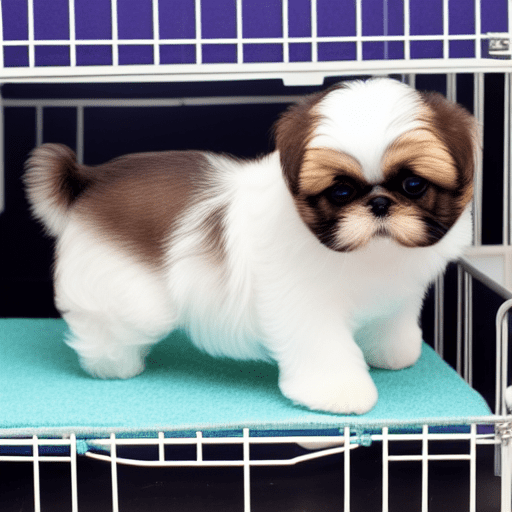
House training a puppy: The 5-Day Plan
Day 1 – Establish rules and boundaries.
On day one, start by establishing rules and boundaries. Show your puppy where their food and water dishes and bed will be.
Then, take them on a tour of the house and yard, pointing out places they are allowed to go (such as the backyard) and places they are not allowed to go (such as the kitchen).
Finally, introduce your puppy to its crate or indoor pen. This will be a safe space where it can go to relax or nap.
Day 2 – Teach your puppy where to go to the bathroom.
Day 2 of house-training your new puppy starts with teaching them where to go to the bathroom. The first step is to take your puppy outside frequently, every 30 minutes to an hour, and give them plenty of opportunities to relieve themselves.
It’s important to bring them to the same spot each time so they start associating that area with going to the bathroom. Once they’ve done their business, praise them enthusiastically so they know they’ve done something good. If they haven’t gone after a few minutes, bring them back inside and try again later.
If they have an accident inside, clean it up immediately and do not scold the puppy. This will make them afraid of you and make house training more difficult.
Day 3 – Start to housebreak and crate train your puppy.
If you’re following our house training schedule, you’re on day 3 with your new puppy. You should have established a good routine by now, and your puppy should start getting the hang of things. Here’s what you need to do on day 3 to continue successfully housebreaking your puppy.
First, provide plenty of opportunities for your puppy to relieve themselves outside. Take them out in the morning, after every meal, and before bedtime. If possible, take them out every hour or so during the day. Once they’ve done their business, give them lots of praise and a treat. This will help reinforce the behavior you want to see.
Second, if you haven’t already done so, start teaching your puppy a cue word or phrase that means “go potty.” This will help them understand what you want them to do when they need to go. Choose a word or phrase that is short and easy to remember, like “outside” or “potty time.” Use the cue word or phrase whenever you take your puppy out to relieve themselves.
Third, continue crate training your puppy. This type of learning will teach them not to go to the bathroom inside at specific times or places. When you can’t supervise them, put them in their crate with a toy or bone to chew on. Only let them out of the crate when they’re calm and relaxed.
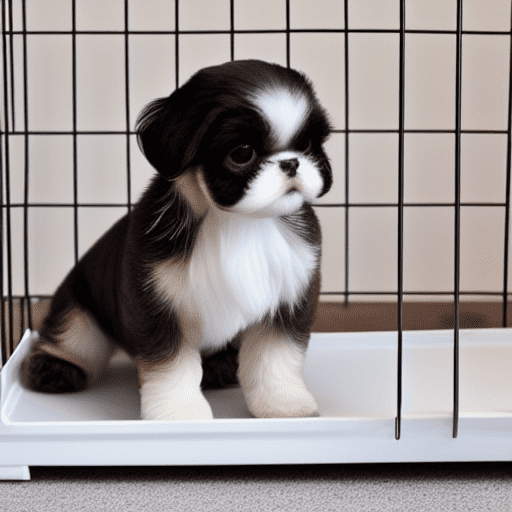
Day 4 – Teach your puppy basic commands.
Sit, stay, and come are all essential commands for any dog, and they can be helpful in various situations. For example, if your puppy gets too excited and jumps on guests, you can tell them to sit and stay. If they start to run off after another dog, you can use the come command to bring them back to you. Teaching your puppy basic commands can help to make them a well-behaved dog that is a joy to be around. Plus, it’s a great way to bond with your new furry friend.
Start by saying the word clearly and firmly to teach your puppy a command. For example, say “sit” as you gently push its hind end into a sitting position. Once your puppy is in the correct position, give it a treat and praise.
Repeat this process several times until your puppy starts to respond to the command without needing the physical prompt. Then you can start using these commands in different situations to reinforce their learning.
Day 5 – Final Tips and Advice
You’ve made it to Day 5; congratulations! You and your puppy are well on your way to a successful house-training relationship. Here are a few final tips and advice to help things go smoothly.
Maintain a regular feeding schedule
Be sure to maintain a regular feeding schedule. An automatic feeder can be a great way to ensure your puppy always has access to food and helps keep them on a regular feeding schedule. This will help make house training more straightforward as they will have less opportunity to soil their crate or bedding due to being too hungry or having to go too long without food.
Clean up accidents immediately
The key is ensuring your puppy doesn’t associate your home with a place to do his business.
Make sure you clean up any accidents immediately. This will help your puppy to understand that this is not the right place to go to the bathroom. If you let the accident sit, your puppy may think this is a proper place to relieve himself.
The best way to clean up an accident is to use a pet enzyme cleaner. It removes the scent of urine or feces and will help prevent your puppy from returning to that spot.
Take your puppy out often.
Make sure you take your puppy out often to potty – at least every few hours. When it is in the right spot, lavish him with praise! This will help reinforce good behavior and let your puppy know he is doing what you want him to do.
If you’re leaving the house, take your puppy out for a potty break first and give them a toy or treat to keep them occupied while you’re gone.
When you come home, do the same thing in reverse. Take your puppy out for a potty break and give it a chance to burn some energy with playtime.
Give your puppy plenty of chances to succeed.
Use a crate
One of the best methods for house training is to use a crate. Puppies dislike soiling their sleeping area, so the crate will help prevent accidents.
Choosing the right size crate is important- one that’s big enough for your puppy to stand up and turn around but not so big that they can use one corner as a bathroom. The crate should also have a comfortable bed and a few toys.
When first introducing your puppy to the crate, make sure to do so gradually. Start by placing the food bowl inside the door and allowing your new puppy to enter and exit the dog crate freely. Once your puppy is comfortable with the crate, you can begin using it for short periods during the day.
At first, they may whine or cry, but it’s essential to remain calm and consistent. With time and patience, your dog will understand that good behavior in their crate leads to tasty treats or fun playtime outside.
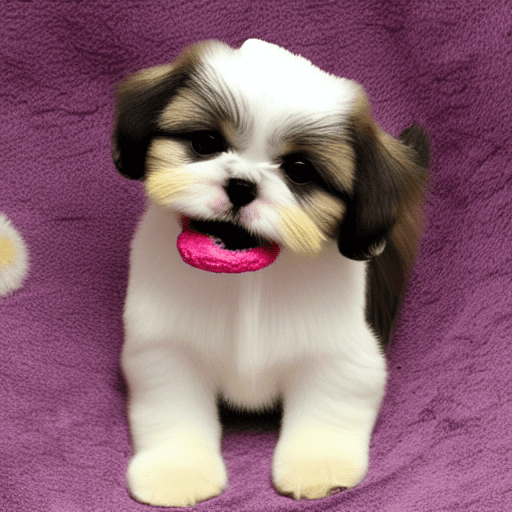
How long does it usually take to house train a puppy?
House training a puppy is an important part of owning a dog, and it’s something that every new dog owner will have to deal with.
The good news is that potty training a puppy is usually not that difficult, and you can train most puppies within a few weeks. However, there are a few things that you’ll need to keep in mind when you potty train your puppy.
First of all, young puppies have tiny bladders and will need to go potty frequently. This means that you’ll need to take them outside often, and you’ll need to be patient while they learn to “hold it.” Puppy pads can be helpful in this process, as they provide a place for your puppy to go potty indoors.
Remember that potty training is a process, and your puppy may take a little while to learn the ropes.
What is the fastest way to house train a puppy?
Many people think the potty training process is complicated, but it doesn’t have to be. The key is to be patient and consistent and to use positive reinforcement when your puppy does something right.
Here are some tips to potty-train your puppy quickly and easily:
– Establish a routine. Puppies do best on a regular schedule. The schedule teaches them that there are times to eat, play, and do their business. Typically, a puppy can control their bladder for one hour every month. So if your puppy is two months old, it can hold it for about two hours. Don’t go longer than this between bathroom breaks, or they’re likely to have an accident.
– Use puppy pads. For very young puppies or puppies that cannot hold it for long periods, it’s helpful to use puppy pads. Put the pads in a designated area, and take your puppy there regularly so they learn that that’s where they should go potty.
– Be consistent. Being consistent is essential when potty training your puppy. Every time they do their business in the right place, make sure you praise them and give them a treat, so they know they’ve done something good. On the other hand, if they have an accident in the house, never punish them – clean it up and move on.
– Be patient. Potty training takes time and patience – there will be accidents, and that’s normal. Stay calm and consistent; eventually, you’ll have a house-trained puppy!
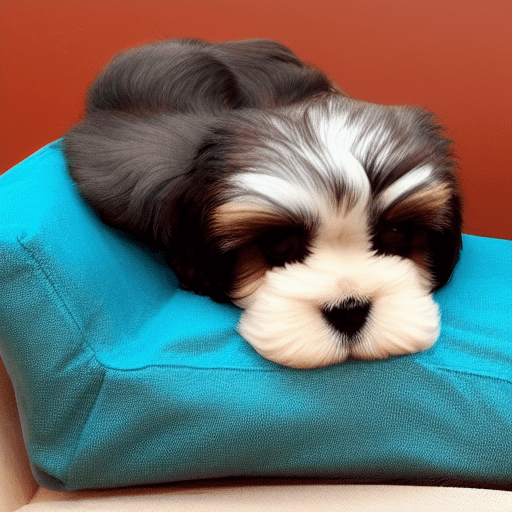
Can a puppy be house-trained in a week?
House training a puppy can be a challenge, but it’s definitely doable – even in a week. The key is to be consistent with your pup and ensure they have plenty of opportunities to relieve themselves outside.
Start by establishing a regular schedule for feeding and potty breaks, and take your pup out first thing in the morning, after naps, and before bedtime. Whenever they eliminate outside, give them lots of praise and treats.
Finally, confine your pup to a small space – like a crate or puppy playpen – when you can’t directly supervise them so they don’t have the opportunity to have accidents indoors.
At what age do puppies stop peeing inside?
Puppies usually start gaining control over their bladder around 4-6 months. However, this can vary depending on the individual puppy. Some puppies may be able to hold it for longer periods, while others may need to go more frequently.
You can do a few things to help your puppy learn to hold it. First, take your puppy out frequently, especially after they eat or drink. Second, provide them with plenty of opportunities to relieve themselves outside. Lastly, be patient and consistent with your training.
If you try to take your puppy out regularly and provide adequate opportunities to potty, they should learn to hold it within a few months.
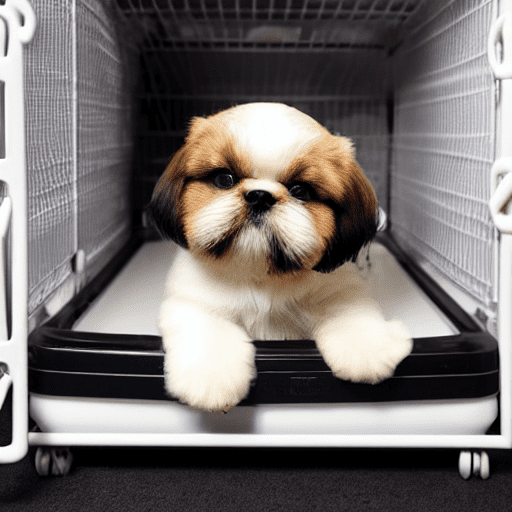
FAQs
What are the hardest dogs to potty train?
Some dogs seem to have a more challenging time regarding potty training. Whether stubborn, easily distracted, or just not that bright, these pups can make it tough on their owners. While there’s no guarantee that any dog will be easy to potty train, certain breeds tend to be more challenging than others. For example, herding dogs like sheepdogs and border collies often have a strong instinct to keep their living space clean, making them resistant to going potty inside the house.
Similarly, hounds and other scent-driven breeds can be distracted by exciting smells, making it hard for them to focus on the task at hand. And then there are the notorious ” Escape Artists” like Jack Russell terriers and Australian cattle dogs, who are known for their resourcefulness and determination – two traits that don’t always make for an easy potty training experience. So if you’re looking for a challenge, these may be the breeds for you.
What are the easiest dogs to potty train?
As any dog owner knows, potty training can be a frustrating process. However, some breeds are easier to train than others.
For example, Golden Retrievers and Labrador Retrieeversoften excel at learning basic commands and housebreaking. These intelligent breeds are quick to learn new tricks and respond well to positive reinforcement.
Additionally, they have a strong desire to please their owners, making them ideal candidates for potty training. Another breed that is known for being easy to train is the Poodle. Poodles are highly intelligent and eager to please their owners, making them quick learners. They also have a natural predisposition towards cleanliness, which helps when it comes to potty training.
Ultimately, you can successfully train any breed with patience and consistency. However, some breeds are easier to train than others, making them ideal candidates for first-time dog owners.
At what age should a dog be potty trained?
Potty training a dog can be a bit of a process, but it’s typically worth the effort for you and your furry friend. The key is to start early and be consistent with your approach.
Most dogs’ ideal age to start potty training is between 4-6 months. By this age, they should have the sufficient muscle control to hold it in when they need to go.
Of course, every dog is different, so if you have an older puppy (say, 8-10 months), don’t despair – they can still learn! Just be patient and keep at it. With a bit of time and effort, you’ll have your four-legged buddy potty trained in no time.
Conclusion
If you follow these tips for house training your puppy and are consistent in your approach, you can have a well-trained dog in just five days. Remember to be patient and positive with your pup; before you know it, they will be potty trained and ready to enjoy life inside the home.
Have you tried this five-day plan to house-train your puppy? What challenges did you face along the way?
Let us know in the comments below.
EXPERT TIP: Make a house training chart to document when and where the puppy pees and poops so you can understand their routines.
Recent Posts
As a dog owner, you want to ensure that you take proper care of your furry companion. A common question that many pet owners have is, "Can I walk my dog 30 minutes after eating?" Understanding the...
Have you ever considered getting an elevated dog bed for your furry friend, but wondered if it's worth the investment? If so, you're not alone. As dog owners, we all want to provide the best care for...

